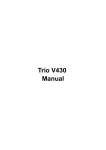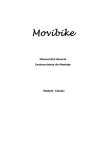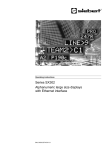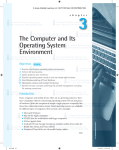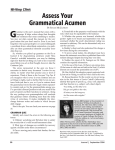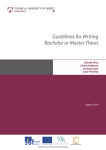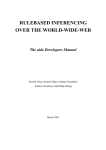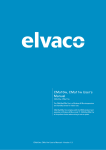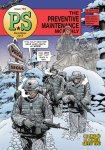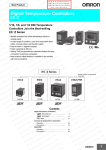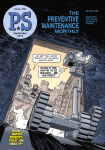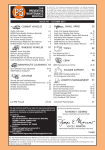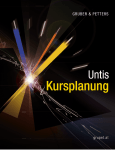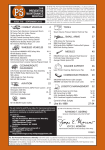Download Archived Course Syllabi here
Transcript
STUDENT WARNING: This course syllabus is from a previous semester archive and serves only as a preparatory reference. Please use this syllabus as a reference only until the professor opens the classroom and you have access to the updated course syllabus. Please do NOT purchase any books or start any work based on this syllabus; this syllabus may NOT be the one that your individual instructor uses for a course that has not yet started. If you need to verify course textbooks, please refer to the online course description through your student portal. This syllabus is proprietary material of APUS. School: Arts and Humanities Course Number: ENGL225 Course Name: Business Communication Credit Hours: 3 Length of Course: 8 Weeks Prerequisite: ENGL101 Table of Contents Course Description Grading Scale Course Scope Course Outline Course Objectives Policies Course Delivery Method Writing Expectations Course Resources Academic Services Evaluation Procedures Selected Bibliography Course Description (Catalog) English 225 Business Communication is designed for students to develop a professional written style for the workplace. Students will examine the similarities and differences between writing for academic venues and professional settings. Students will examine and develop various types of business documents including email, proposal reports, user manuals, and other professional communiques. Table of Contents Course Scope ENGL225 Business Writing provides instruction in the effectiveness of correct business communication. Students will engage in a variety of business writing exercises to allow students to practice with simulated real-world materials and situations. Writing for the world of work is a craft, not an art form; it is a rational process that can be learned. Each exercise in the course aims toward developing student skills in the rational process of business communication. Table of Contents STUDENT WARNING: This course syllabus is from a previous semester archive and serves only as a preparatory reference. Please use this syllabus as a reference only until the professor opens the classroom and you have access to the updated course syllabus. Please do NOT purchase any books or start any work based on this syllabus; this syllabus may NOT be the one that your individual instructor uses for a course that has not yet started. If you need to verify course textbooks, please refer to the online course description through your student portal. This syllabus is proprietary material of APUS. Course Objectives Students who successfully complete this course will be able to: • Compose and analyze the kind of writing required to respond properly to business communication situations and become familiar with the process of producing documents common in the world of business. • Produce letters, memos, reports, e-mails, and other correspondence that achieve a purpose, are clear and easy to understand, engage the attention of the audience, and are enjoyable to read. • Differentiate between effective and ineffective communication in a business setting. • Organize, plan, and prepare effective business correspondence. • Synthesize information from a variety of sources, through techniques of assessment and evaluation, into well-composed business messages. Table of Contents Course Delivery Method This course delivered via distance learning will enable students to complete academic work in a flexible manner, completely online. Course materials and access to an online learning management system will be made available to each student. Online assignments are due by Sunday evening of the week as noted and include Forum questions (accomplished in groups through a threaded forum), examination, and individual assignments submitted for review by the Faculty Member). Assigned faculty will support the students throughout this eight-week course. Table of Contents Course Resources Required Textbook: Davis, K. Business Writing and Communication. Second Edition, N.J.: McGraw-Hill, 2010. (The McGrawHill 36-Hour Course) Course Materials: In the Course Lesson Tabs and Assignment tabs of the classroom, various handouts will be available for our weekly assignments. Website links will also be utilized. This list is titled "Webliography." STUDENT WARNING: This course syllabus is from a previous semester archive and serves only as a preparatory reference. Please use this syllabus as a reference only until the professor opens the classroom and you have access to the updated course syllabus. Please do NOT purchase any books or start any work based on this syllabus; this syllabus may NOT be the one that your individual instructor uses for a course that has not yet started. If you need to verify course textbooks, please refer to the online course description through your student portal. This syllabus is proprietary material of APUS. In addition to the required course texts, the following public domain web sites are useful. Please abide by the university’s academic honesty policy when using Internet sources as well. Note web site addresses are subject to change. Also, notice in Course Home tab a link “Course Guide” to the Online Library’s ENG225 helpful resources. Site Name Grammar Blue Book Merriam-Webster Online Dictionary Guide to Grammar and Writing The Purdue Online Writing Lab (Owl) WebSite URL/Address www.grammarbook.com www.m-w.com http://grammar.ccc.commnet.edu/grammar/ http://owl.english.purdue.edu/ Table of Contents Evaluation Procedures Based on a point system, your final grade will be calculated as follows (% of final grade on the right): Grade Instruments Homework Assignment 1 Homework Assignment 2 Homework Assignment 3 Homework Assignment 4 Homework Assignment 5 Homework Assignment 6 Final Project: Formal Report Project Final Project: PowerPoint Presentation Forum Posts Week 1 Forum Posts Week 2 Forum Posts Week 3 Forum PostsWeek 4 Forum Posts Week 6 Forum Posts Week 7 Total Points 100 100 100 100 100 100 100 100 100 100 100 100 100 100 1400 Percent of Final 5 5 5 7.5 10 7.5 15 15 5 5 5 5 5 5 100% Table of Contents 8 – Week Course Outline Please see the Student Handbook to reference the University’s grading scale. Table of Contents STUDENT WARNING: This course syllabus is from a previous semester archive and serves only as a preparatory reference. Please use this syllabus as a reference only until the professor opens the classroom and you have access to the updated course syllabus. Please do NOT purchase any books or start any work based on this syllabus; this syllabus may NOT be the one that your individual instructor uses for a course that has not yet started. If you need to verify course textbooks, please refer to the online course description through your student portal. This syllabus is proprietary material of APUS. Week Topic Identifying Characteristics of business writing: Writing at Work-Perspective LO-1: Differentiate between effective and ineffective communication in a business setting. LO-2: Identify particularities of business and academic writing. 1 Structure of Effective Communication “Nuts and bolts” 2 Learning Objectives (LO) LO: Examine and master Elements of Correctness. Readings Handouts (PDFs and Docs) located as links in the course modules: The Six Cs of Effective Communication Elements of an Academic Essay Top Ten Tips for Writing at Work Assignment Forum Week 1: Introduction Forum.Initial post due by Wed. Week 1: Compare and Contrast Forum. Initial post due by Wed.(GRADED) Assignment 1: In Six C’s readings, re-write the sentences in exercises A, B, C, and D. Submit as a Word Doc in the Week 1 Assignment task area. Textbook: Read Davis text Chapters 2 and Chapter 11 Course Materials Handouts located in modules: Open and review the list of Helpful Websites (PDF). Read the Punctuation Cheat Sheet (PDF) ** Looking Ahead—review the notes in the Syllabus on the Week 7 and Week 8 project….view links for the Final Project located in the looking ahead tab of Week 2 and begin to get organized and started Post questions as the arise in the General Course Questions Forum. Week Forum.In Forum2Week 2. it dInitial post due ue by Wed. by ial po Week 2 assignment: Wed.Two Follow Using the handout with o websites, check them Othe list eups to peers by t ut and mSunday. ngage in at least TW e S echanics quizzes. Inrehe tudent Comments ar a of the Assignment 2: w Week 2 assignment a e a, tell wUsing We the handout hich two quizzes you did and Uwith hat you thethought list of of thIn m. a pload to this same 2 ek 2 check Dwebsites, ssignment dropbox: - a W or out and Cthem oc submit Page 200- 01 of sengage inofattext. least hapter 11 Re write th sentences into a Word doc an TWO mechanics . ubmit. quizzes. In the Student Comments area of the Week 2 assignment area, tell me which two quizzes you did and what you thought of them. Upload to this same Week 2 STUDENT WARNING: This course syllabus is from a previous semester archive and serves only as a preparatory reference. Please use this syllabus as a reference only until the professor opens the classroom and you have access to the updated course syllabus. Please do NOT purchase any books or start any work based on this syllabus; this syllabus may NOT be the one that your individual instructor uses for a course that has not yet started. If you need to verify course textbooks, please refer to the online course description through your student portal. This syllabus is proprietary material of APUS. assignment dropbox: In a Word Doc submit Page 200-202 of Chapter 11 of text. Re-write the ten (10) sentences into a Word doc and submit. The Sentence Level 3 LO: Students will be able to identify economical and concise sentence structure. Textbook: Read Davis Chapters 8, 9 and 10 Forum Week 3. Initial post due by Wednesday Week Lecture: Sentence Structure.Parallel and Passive voice. **Looking ahead: Begin research for your Week 7 report. See the details below on this assignment as well as the Final Project links in Week 2 Looking ahead or the Week 7 assignment tab. Assignment 3: Go to the CCCComnet Site: http://grammar.cc c.commnet.edu/g rammar/ Within the website listed above, go to the Parallel Voice and Passive Voice exercises and take the quizzes on each. Then, when you go to upload your written assignment, make a note in the Student Comments section of the Week 3 assignment section are that you completed both quizzes. Also, comment on your performance on the quizzes. In that same dropbox, upload as a Word Doc exercise B on page 168 of Chapter 9. STUDENT WARNING: This course syllabus is from a previous semester archive and serves only as a preparatory reference. Please use this syllabus as a reference only until the professor opens the classroom and you have access to the updated course syllabus. Please do NOT purchase any books or start any work based on this syllabus; this syllabus may NOT be the one that your individual instructor uses for a course that has not yet started. If you need to verify course textbooks, please refer to the online course description through your student portal. This syllabus is proprietary material of APUS. Organizing information and structuring content. LO: Organize, plan and prepare effective business correspondence. Textbook: Read Davis Chapters 3 and 4 LO: Synthesize information from a variety of sources, through techniques of assessment and evaluation, into well-composed business messages. Textbook: Read Davis Chapters 5, 6, and 7. Course Materials: Review the User Manual writing exercise in Lesson tab for Week 5. Links provided in Lesson Tab. LO -1: Identify methods and steps to the writing process. Textbook: Review Davis chapters a necessary 4 Organizing information (continued) Analyzing Audience. 5 The Writing Process MLA, APA, and Documentation Issues 6 LO – 2: Students will identify the application of documentation of resources in business writing. Course Lecture: Review the Business Writing Outline notes. Continue research on your Week 7 report (which will give you the content for your Week 8 PPT) *See below for details. Continue research on your Week 7 report (which will give you the content for your Week 8 PPT) See below for details. Course Materials Handouts; Review the Business Report layout in the Final Project Folder “Notes” Handout. Review the OWL site from the Helpful Website page, as well as the APA and MLA sections of Owl. Continue research on your Week 7 report (which will give you the content for your Week 8 PPT) *See below for details. Forum Week 4. Initial post due by Wednesday Assignment 4: Compose the business letter (in proper business letter format) as prompted o page 93 of the text. NO Graded Forum to work in this week Assignment 5: In a Word doc, generate a “User Manual.” View the Lecture in Lesson Tab and all links. Review the Grading rubric for the User Manual Assignment in Assignment 5 tab. Forum Week 6 Initial post due by Wednesday Week 6 Optional Peer Review Forum: Located between Week 6 and 7 Forums, use this area to discuss course projects and exchange drafts. Assignment 6: Review the Email exercise prompt from the Assignment 6 tab compose an STUDENT WARNING: This course syllabus is from a previous semester archive and serves only as a preparatory reference. Please use this syllabus as a reference only until the professor opens the classroom and you have access to the updated course syllabus. Please do NOT purchase any books or start any work based on this syllabus; this syllabus may NOT be the one that your individual instructor uses for a course that has not yet started. If you need to verify course textbooks, please refer to the online course description through your student portal. This syllabus is proprietary material of APUS. Business Reports and other longer communications. LO:Identify and execute the various elements of the business report. Review textbook, websites, and handouts as needed. “email” (in MS Word) complete with Subject line, employing all aspects of the Six Cs of communication and organize and present information for the benefit of the reader. Forum Week 7 Initial post due by Wednesday Optional Peer Review Forum: Located between Week 6 and 7 Forums, use this area to discuss course projects and exchange drafts. 7 Assignments 7: Business Report Due to the Week 7 Assignment Dropbox. Visual Elements of Business Communication. 8 LO: Presenting information using a non-text-based application (MS PowerPoint) Review textbook, websites, and handouts as needed. Forum Week 8 (ungraded): Concluding Thoughts Forum Optional Peer Review Forum: Located between Week 6 and 7 Forums, use this area to discuss course project presentations. Assignment 8: STUDENT WARNING: This course syllabus is from a previous semester archive and serves only as a preparatory reference. Please use this syllabus as a reference only until the professor opens the classroom and you have access to the updated course syllabus. Please do NOT purchase any books or start any work based on this syllabus; this syllabus may NOT be the one that your individual instructor uses for a course that has not yet started. If you need to verify course textbooks, please refer to the online course description through your student portal. This syllabus is proprietary material of APUS. Produce a 6-10 slide PPT presentation based on your Week 7 report. Table of Contents Policies Please see theStudent Handbook to reference all University policies. Quick links to frequently asked question about policies are listed below. Drop/Withdrawal Policy Plagiarism Policy Extension Process and Policy Disability Accommodations Writing Expectations Forums and Assignment Expectations: Graded Forums ongoing each week: All Weeks containing Graded Forum tasks are graded out of 100 points. For full credit: initial post to respond to prompt is 200-250 words and is posted by Wednesday of the week. Substantive posts address the question, provide insight, connections to our assigned readings and lesson lecture content, and even may include cited outside research. Each Forum also requires a student respond to at least two classmates by Sunday. A substantive response is 50-100 words and offers more than an “I agree” or “I disagree” sentiment. Follow ups can include furthering the topic by offering additional examples, illustrations, “for instances”; links to helpful websites, sharing of personal experience regarding the topic, or speculative examples or applications of the ideas in the Forums. Writing Assignments (Points 100; Percent of grade ranges from 7.5 to 15): All writing assignments for Weeks 1-7 must be done in MS Word. Students using OpenOffice or Mac Pages must “save as” .doc or .docx (even .rtf will work). Use Ariel or Times New Roman 11 or 12 point font unless working in a creative layout (for example, in the Week 5 User Manual assignment). Week 8’s assignment is a PowerPoint Presentation. Using Open Office, save files as .PPT, PPTX, or PPS. *Week 7 Final Report: STUDENT WARNING: This course syllabus is from a previous semester archive and serves only as a preparatory reference. Please use this syllabus as a reference only until the professor opens the classroom and you have access to the updated course syllabus. Please do NOT purchase any books or start any work based on this syllabus; this syllabus may NOT be the one that your individual instructor uses for a course that has not yet started. If you need to verify course textbooks, please refer to the online course description through your student portal. This syllabus is proprietary material of APUS. This 6-10 page business report is designed to provide a “real world” experience in composing a business report. Students will choose their topics, but should consider topics that genuinely interest them and may be currently applicable to their jobs, or applicable to a job they aspire to have. The final report is done in MS Word, contains a cover letter, summary, introduction, discussion (with at least one illustration), conclusion, recommendations, Works Cited (at least 6), and appendix (at least one item in appendix). More info in Course weekly modules and assignment tabs. *Week 8 Final Report Presentation (PPT): This 6-10 slide PowerPoint presentation is based on the content of the Week 7 report. Students generate slides/presentation with bullets, illustration, graphs, etc. as they would present to a business meeting setting. More info in Course weekly modules and assignment tabs RUBRICS: Any assignment with a grading rubric will have that rubric located in the Course within the assignment tab within the details for that assignment. Citation and Reference Style Attention Please: Students will follow the MLA or APA as the sole citation and reference style used in written work submitted as part of coursework to the University. Assignments completed in a narrative essay or composition format must follow the citation style cited in the. Note on plagiarism policy: All students enrolled in this course are expected to be aware of what plagiarism means and how to avoid it. In other words, since you have all taken introductory classes at APUS that explain plagiarism and its consequences instructors will not tolerate the “I didn't know this was plagiarism” argument. You can always ask your instructor if in doubt, but ignorance is not an excuse. Further, instructors have the right to check your work for plagiarism with the help of TURNITIN, a plagiarism detection software—The use TURNITIN in this course may not be mandated by default, but instructors can check any time if they see the need to do so. All submitted papers are expected to be properly documented. Remember that not using sources is not the solution—you are expected to find and quote or paraphrase good material in a higher-level English course. Late Assignments Students are expected to submit classroom assignments by the posted due date and to complete the course according to the published class schedule. As adults, students, and working professionals, I understand you must manage competing demands on your time. Should you need additional time to complete an assignment, please contact me before the due date so we can discuss the situation and determine an acceptable resolution. Routine submission of late assignments is unacceptable and may result in points deducted from your final course grade. Netiquette Online universities promote the advancement of knowledge through positive and constructive debate – both inside and outside the classroom. Forums on the Internet, however, can occasionally degenerate into needless insults and “flaming.” Such activity and the loss of good STUDENT WARNING: This course syllabus is from a previous semester archive and serves only as a preparatory reference. Please use this syllabus as a reference only until the professor opens the classroom and you have access to the updated course syllabus. Please do NOT purchase any books or start any work based on this syllabus; this syllabus may NOT be the one that your individual instructor uses for a course that has not yet started. If you need to verify course textbooks, please refer to the online course description through your student portal. This syllabus is proprietary material of APUS. manners are not acceptable in a university setting – basic academic rules of good behavior and proper “Netiquette” must persist. Remember that you are in a place for the rewards and excitement of learning which does not include descent to personal attacks or student attempts to stifle the Forum of others. • Technology Limitations: While you should feel free to explore the full-range of creative composition in your formal papers, keep e-mail layouts simple. The Sakai classroom may not fully support MIME or HTML encoded messages, which means that bold face, italics, underlining, and a variety of color-coding or other visual effects will not translate in your e-mail messages. • Humor Note: Despite the best of intentions, jokes andespeciallysatire can easily get lost or taken seriously. If you feel the need for humor, you may wish to add “emoticons” to help alert your readers: ;-), : ), Disclaimer Statement Course content may vary from the outline to meet the needs of this particular group. Table of Contents Online Library The Online Library is available to enrolled students and faculty from inside the electronic campus. This is your starting point for access to online books, subscription periodicals, and Web resources that are designed to support your classes and generally not available through search engines on the open Web. In addition, the Online Library provides access to special learning resources, which the University has contracted to assist with your studies. Questions can be directed to [email protected]. • • • • Charles Town Library and Inter Library Loan: The University maintains a special library with a limited number of supporting volumes, collection of our professors’ publication, and services to search and borrow research books and articles from other libraries. Electronic Books: You can use the online library to uncover and download over 50,000 titles, which have been scanned and made available in electronic format. Electronic Journals: The University provides access to over 12,000 journals, which are available in electronic form and only through limited subscription services. Tutor.com: AMU and APU Civilian & Coast Guard students are eligible for 10 free hours of tutoring provided by APUS. Tutor.com connects you with a professional tutor online 24/7 to provide help with assignments, studying, test prep, resume writing, and more.Tutor.com is tutoring the way it was meant to be. You get expert tutoring whenever you need help, and you work one-to-one with your tutor in your online classroom on your specific problem until it is done. STUDENT WARNING: This course syllabus is from a previous semester archive and serves only as a preparatory reference. Please use this syllabus as a reference only until the professor opens the classroom and you have access to the updated course syllabus. Please do NOT purchase any books or start any work based on this syllabus; this syllabus may NOT be the one that your individual instructor uses for a course that has not yet started. If you need to verify course textbooks, please refer to the online course description through your student portal. This syllabus is proprietary material of APUS. Request a Library Guide for your course (http://apus.libguides.com/index.php) The AMU/APU Library Guides provide access to collections of trusted sites on the Open Web and licensed resources on the Deep Web. The following are specially tailored for academic research at APUS: • • Program Portals contain topical and methodological resources to help launch general research in the degree program. To locate, search by department name, or navigate by school. Course Lib-Guides narrow the focus to relevant resources for the corresponding course. To locate, search by class code (e.g., SOCI111), or class name. If a guide you need isnot available yet, please email the APUS Library: [email protected]. Table of Contents Turnitin.com Faculty may require assignments be submitted to Turnitin.com. Turnitin.com will analyze a paper and report instances of potential plagiarism for the student to edit before submitting it for a grade. In some cases, professors may require students to use Turnitin.com. Typically the course professor will establish a Turnitin.com access code for his/her classes. If the code has not been established, those who wish to use Turnitin.com may ask their professor to establish the code. Table of Contents Selected Bibliography Hacker, Diana. A Pocket Style Manual.6th ed. New York: Bedford/St. Martin’s, 2012. Print. For additional online materials, see the Online Library Table of Contents











